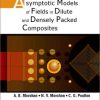Introduction to Chemistry A Conceptual Approach 2nd Edition by Richard Bauer, James Birk, Pamela Marks ISBN 0077405706 9780077405700
$50.00 Original price was: $50.00.$35.00Current price is: $35.00.
Introduction to Chemistry A Conceptual Approach 2nd Edition by Richard Bauer, James Birk, Pamela Marks – Ebook PDF Instant Download/Delivery: 0077405706 ,9780077405700
Full download Introduction to Chemistry A Conceptual Approach 2nd Edition after payment
Product details:
ISBN 10: 0077405706
ISBN 13: 9780077405700
Author: Richard Bauer, James Birk, Pamela Marks
Introduction to Chemistry A Conceptual Approach 2nd Edition Table of contents:
1: Matter and Energy
MATTER AND ITS CLASSIFICATION
Composition of Matter
Representations of Matter
States of Matter
PHYSICAL AND CHEMICAL CHANGES AND PROPERTIES OF MATTER
Physical Properties
Physical Changes
Chemical Changes
Chemical Properties
ENERGY AND ENERGY CHANGES
SCIENTIFIC INQUIRY
Observations
Hypotheses
Laws
Theories
Scientific Inquiry in Practice
Summary
Math Toolbox 1.1 Scientific Notation
Math Toolbox 1.2 Significant Figures
Math Toolbox 1.3 Units and Conversions
Key Relationships
Key Terms
Questions and Problems
2: Atoms, Ions, and the Periodic Table
DALTON’S ATOMIC THEORY
STRUCTURE OF THE ATOM
Subatomic Particles
The Nuclear Atom
Isotopes, Atomic Number, and Mass Number
IONS
ATOMIC MASS
THE PERIODIC TABLE
Classification of Elements
Ions and the Periodic Table
Summary
Key Terms
Questions and Problems
3: Chemical Compounds
IONIC AND MOLECULAR COMPOUNDS
MONATOMIC AND POLYATOMIC IONS
Monatomic Ions
Polyatomic Ions
FORMULAS FOR IONIC COMPOUNDS
NAMING IONIC COMPOUNDS
NAMING AND WRITING FORMULAS FOR MOLECULAR COMPOUNDS
ACIDS AND BASES
PREDICTING PROPERTIES AND NAMING COMPOUNDS
Summary
Key Terms
Questions and Problems
4: Chemical Composition
PERCENT COMPOSITION
MOLE QUANTITIES
Moles and Particles
Molar Mass
DETERMINING EMPIRICAL AND MOLECULAR FORMULAS
Empirical and Molecular Formulas
Determining Empirical Formulas
Empirical Formulas from Percent Composition
Empirical Formulas for Compounds Containing More Than Two Elements
Empirical Formulas with Fractional Mole Ratios
Molecular Formulas from Empirical Formulas
Determining Percent Composition
CHEMICAL COMPOSITION OF SOLUTIONS
Concentration
Percent by Mass
Molarity
Dilution
Summary
Key Relationships
Key Terms
Questions and Problems
5: Chemical Reactions and Equations
WHAT IS A CHEMICAL REACTION?
HOW DO WE KNOW A CHEMICAL REACTION OCCURS?
WRITING CHEMICAL EQUATIONS
PREDICTING CHEMICAL REACTIONS
Decomposition Reactions
Combination Reactions
Single-Displacement Reactions
Double-Displacement Reactions
Combustion Reactions
REPRESENTING REACTIONS IN AQUEOUS SOLUTION
Summary
Key Terms
Questions and Problems
6: Quantities in Chemical Reactions
THE MEANING OF A BALANCED EQUATION
MOLE-MOLE CONVERSIONS
MASS-MASS CONVERSIONS
LIMITING REACTANTS
PERCENT YIELD
ENERGY CHANGES
Law of Conservation of Energy
Energy Changes That Accompany Chemical Reactions
Quantities of Heat
HEAT CHANGES IN CHEMICAL REACTIONS
Summary
Key Relationships
Key Terms
Questions and Problems
7: Electron Structure of the Atom
ELECTROMAGNETIC RADIATION AND ENERGY
Properties of Electromagnetic Radiation
Atomic Spectra
THE BOHR MODEL OF THE HYDROGEN ATOM
THE MODERN MODEL OF THE ATOM
Orbital Diagrams for Multielectron Atoms
Electron Configurations
PERIODICITY OF ELECTRON CONFIGURATIONS
VALENCE ELECTRONS FOR THE MAIN-GROUP ELEMENTS
ELECTRON CONFIGURATIONS FOR IONS
PERIODIC PROPERTIES OF ATOMS
Chemical Reactivity and Electron Configurations
Ionization Energy
Atomic Size
Sizes of Ions
Summary
Key Relationships
Key Terms
Questions and Problems
8: Chemical Bonding
TYPES OF BONDS
Ionic and Covalent Bonding
Polar and Nonpolar Covalent Bonds
Electronegativity
IONIC BONDING
Lewis Symbols
Structures of Ionic Crystals
COVALENT BONDING
The Octet Rule
Lewis Formulas for the Diatomic Elements
Valence Electrons and Number of Bonds
Structures of Covalent Molecules
Exceptions to the Octet Rule
Bonding in Carbon Compounds
SHAPES OF MOLECULES
The Valence-Shell Electron-Pair Repulsion Theory
Polarity of Molecules
Summary
Key Terms
Questions and Problems
9: The Gaseous State
THE BEHAVIOR OF GASES
Temperature and Density
Pressure
FACTORS THAT AFFECT THE PROPERTIES OF GASES
Volume and Pressure
Volume and Temperature
Volume, Pressure, and Temperature
Gay-Lussac’s Law of Combining Volumes
Avogadro’s Hypothesis
THE IDEAL GAS LAW
Calculations with the Ideal Gas Law
Dalton’s Law of Partial Pressures
KINETIC-MOLECULAR THEORY OF GASES
Postulates of Kinetic-Molecular Theory
Diffusion and Effusion
GASES AND CHEMICAL REACTIONS
Product Volume from Reactant Volume
Moles and Mass from Volume
Summary
Math Toolbox 9.1 Graphing
Math Toolbox 9.2 Solving Simple Algebraic Equations
Key Relationships
Key Terms
Questions and Problems
10: The Liquid and Solid States
CHANGES OF STATE
Liquid-Gas Phase Changes
Liquid-Solid Phase Changes
Solid-Gas Phase Changes
Cooling and Heating Curves
Energy Changes
INTERMOLECULAR FORCES
London Dispersion Forces
Dipole-Dipole Forces
Hydrogen Bonding
Trends in Intermolecular Forces
PROPERTIES OF LIQUIDS
Density
Viscosity
Surface Tension
PROPERTIES OF SOLIDS
Crystals and Crystal Lattices
Types of Crystalline Solids
Summary
Key Relationships
Key Terms
Questions and Problems
11: Solutions
THE COMPOSITION OF SOLUTIONS
THE SOLUTION PROCESS
FACTORS THAT AFFECT SOLUBILITY
Structure
Temperature
Pressure
MEASURING CONCENTRATIONS OF SOLUTIONS
Percent by Mass
Percent by Volume
Mass/Volume Percent
Parts per Million and Parts per Billion
Molarity
Molality
QUANTITIES FOR REACTIONS THAT OCCUR IN AQUEOUS SOLUTION
Precipitation Reactions
Acid-Base Titrations
COLLIGATIVE PROPERTIES
Osmotic Pressure
Vapor Pressure Lowering
Boiling Point Elevation
Freezing Point Depression
Colligative Properties and Strong Electrolytes
Summary
Key Relationships
Key Terms
Questions and Problems
12: Reaction Rates and Chemical Equilibrium
REACTION RATES
COLLISION THEORY
CONDITIONS THAT AFFECT REACTION RATES
Concentration and Surface Area
Temperature
Catalysts
CHEMICAL EQUILIBRIUM
THE EQUILIBRIUM CONSTANT
The Equilibrium Constant Expression
Predicting the Direction of a Reaction
Heterogeneous Equilibrium
LE CHATELIER’S PRINCIPLE
Reactant or Product Concentration
Volume of the Reaction Container
Temperature
Catalysts
Increasing Product Yield
Summary
Key Relationship
Key Terms
Questions and Problems
13: Acids and Bases
WHAT ARE ACIDS AND BASES?
Acid and Base Definitions
Conjugate Acid-Base Pairs
Acidic Hydrogen Atoms
STRONG AND WEAK ACIDS AND BASES
Strong Acids
Strong Bases
Weak Acids
Weak Bases
RELATIVE STRENGTHS OF WEAK ACIDS
Acid Ionization Constants
Polyprotic Acids
ACIDIC, BASIC, AND NEUTRAL SOLUTIONS
The Ion-Product Constant of Water
Calculating H3O+ and OH- Ion Concentrations
THE pH SCALE
Calculating pH
Calculating pOH
Calculating Concentrations from pH or pOH
Measuring pH
BUFFERED SOLUTIONS
Summary
Math Toolbox 13.1 Log and Inverse Log Functions
Key Relationships
Key Terms
Questions and Problems
14: Oxidation-Reduction Reactions
WHAT IS AN OXIDATION-REDUCTION REACTION?
OXIDATION NUMBERS
BATTERIES
BALANCING SIMPLE OXIDATION-REDUCTION EQUATIONS
BALANCING COMPLEX OXIDATION-REDUCTION EQUATIONS
ELECTROCHEMISTRY
Voltaic Cells
Electrolytic Cells
CORROSION PREVENTION
Summary
Key Terms
Questions and Problems
15: Nuclear Chemistry
RADIOACTIVITY
Nuclear Decay
Radiation
NUCLEAR REACTIONS
Equations for Nuclear Reactions
Particle Accelerators
Predicting Spontaneous Nuclear Decay Reactions
RATES OF RADIOACTIVE DECAY
Detection of Radiation
Half-Lives
Archeological Dating
Geological Dating
MEDICAL APPLICATIONS OF ISOTOPES
Power Generators
Medical Diagnoses
Positron Emission Tomography
Cancer Therapy
BIOLOGICAL EFFECTS OF RADIATION
Radiation Exposure
Radon
NUCLEAR ENERGY
Uranium-235 Fission
Chain Reactions
Fission Reactors
Fusion Reactors
Summary
Key Terms
Questions and Problems
16: Organic Chemistry
REPRESENTATIONS OF ORGANIC MOLECULES
HYDROCARBONS
Classes of Hydrocarbons
Petroleum
ACYCLIC HYDROCARBONS
Alkanes
Alkenes and Alkynes
CYCLIC HYDROCARBONS
Cycloalkanes and Cycloalkenes
Aromatic Hydrocarbons
ALCOHOLS AND ETHERS
Alcohols
Ethers
ALDEHYDES AND KETONES
Aldehydes
Ketones
CARBOXYLIC ACIDS AND ESTERS
Carboxylic Acids
Esters
AMINES
ORGANIC NOMENCLATURE
Alkanes
Alkenes and Alkynes
Aromatic Hydrocarbons
Other Naming Conventions
Summary
Key Terms
Questions and Problems
17: Biochemistry
PROTEINS
Composition of Proteins
Hydrolysis of Proteins
Structure of Proteins
Denaturation of Proteins
NUCLEIC ACIDS
Structure of Nucleic Acids
Deoxyribonucleic Acid and Replication
Ribonucleic Acid, Transcription, and Translation
CARBOHYDRATES
Simple Carbohydrates
Complex Carbohydrates
LIPIDS
Summary
Key Terms
Questions and Problems
Appendices
USEFUL REFERENCE INFORMATION
MATH TOOLBOXES
ANSWERS TO PRACTICE PROBLEMS
ANSWERS TO SELECTED QUESTIONS AND PROBLEMS
Glossary
Credits
Index
People also search for Introduction to Chemistry A Conceptual Approach 2nd Edition:
chapter 1 introduction to chemistry pdf
questions on introduction to chemistry
introduction to chemistry pdf
introduction to chemistry textbook
Tags:
Richard Bauer,James Birk,Pamela Marks,Chemistry,Conceptual



